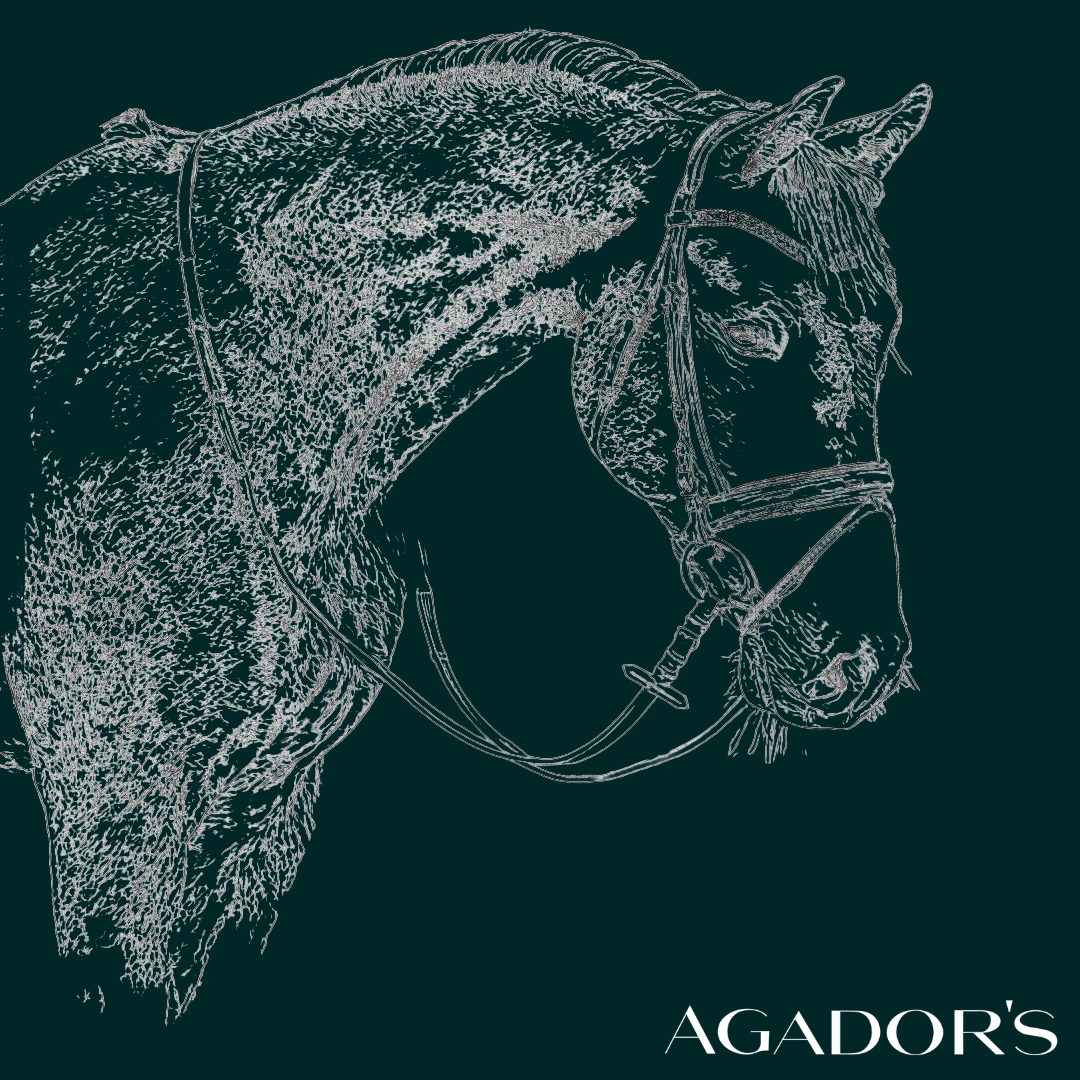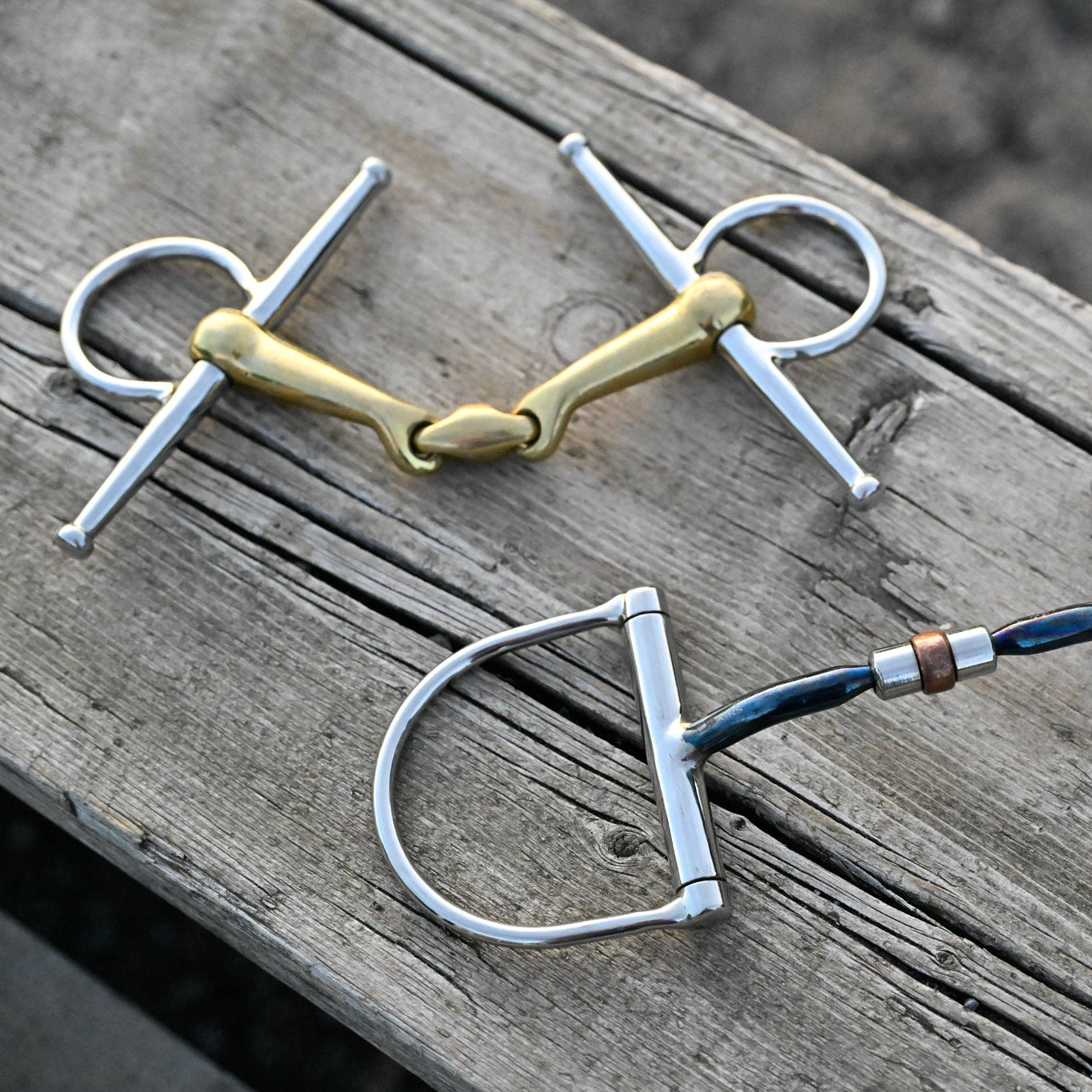
From Frustration to Clarity: Try These Four Bit Types To Decode Your Horse’s Preferences
If your current bit setup feels like a dead end and your horse continues to show resistance or discomfort, it may be time to step back and run a structured bit trial. Before reaching for stronger gear, more leverage, or tighter nosebands, the priority should always be comfort and clarity. Without them, it's hard to build trust.
We always recommend to start by checking the available space between your horse’s tongue and palate. This measurement determines how much room your horse has for the bit and helps you avoid inadvertently overcrowding the mouth. You can follow the demonstration in our video, which is part of the Illustrated Sizing Guide. Some horses can handle more thickness than their mouth size would suggest, however, for most this will be a good starting point and possibly eliminate one of the most common fit issues.
Once you've assessed tongue thickness and palate height and selected an appropriate bit thickness, try these four types of snaffle mouthpieces. Each of these should be tested in a basic snaffle format e.g. a loose ring or fixed ring like an eggbutt or a Dee. For the purpose of this trial, avoid curb-style or gag bits such as Kimberwicks, Pelhams, or three-rings. If you absolutely must use one, do so without engaging the curb rein to ensure a like-for-like comparison.
We strongly encourage you borrow rather than buy the bits, since the whole point of running a trial is to find one bit that works better than others.
Each bit should be a reasonably good fit. When you gently pull the bit to one side and release, the other side should not leave more than one to two centimeters of gap between the lips and the bit ring. We don't want poor sizing to affect your horse's reactions to fit.
Mullen Mouth Snaffle
This is a solid, unjointed mouthpiece that offers a very steady feel in the mouth. It applies even pressure across the tongue and avoids any joint-related pinching. Many horses appreciate this stability, especially if they dislike movement or the tongue crushing effect of classic jointed snaffles.
-
Even pressure on the tongue
-
Increased bar pressure due to the fixed structure
-
No palate interference
-
May cause the mouthpiece to lift on the opposite side if reins are engaged unevenly
-
Best to avoid designs that are completely straight or the opposite - with large vertical or curved ports (exceeding about an inch or 30mm in height)

Double Jointed Snaffle with a Simple Lozenge
This is a highly versatile option that distributes pressure over more contact points than a single-jointed bit. The central lozenge lies flat on the tongue, reducing the risk of palate contact while offering a more subtle cue.
-
Moderate tongue and bar pressure with the bit wrapping around the tongue giving the "pre-signal" and once reaching minimum angle at joints transfers pressure on the bars
-
Avoids any palate pressure or interference unless incorrectly sized for thickness
-
Avoid any bits with sharp angles, protruding joints, or flat center links such as Dr. Bristols or French Links
-
Best to stick to 12 to 15 millimeter diameter for most horses for the purposes of this trial

Barrel Link Snaffle
This bit mimics the feel of a double-jointed snaffle but has a locking center barrel which prevents the bit from fully collapsing. This allows more independent movement of the cannons and some degree of tongue relief.
-
More consistent and subtle pressure
-
Slight hugging action on the tongue without full collapse
-
Often suitable for horses that dislike tongue pressure but need more nuance than a mullen mouth provides
-
Encourages lateral softness due to independent cannon rotation

Single Jointed Snaffle
A classic design still favoured by some horses although has fallen out of "fashion" with many riders. While many horses find the action too sharp, others respond well to the clear pressure points it provides. When fitted correctly, it can help a horse that needs more straightforward cues.
-
Direct tongue pressure from both sides of the joint
-
Strong tongue pressure, medium pressure on the sides of bars, minimal palate contact in most cases. Most single jointed bits will redirect pressure towards the sides rather than top of the bars like all the other bit types above. For this reason alone we believe this type of bit can be well worth trying and can work surprisingly well for some horses.
-
Contrary to some common opinions we do not find that a pronounced curvature of the cannons makes a single jointed bit more ergonomic or less likely to interfere with palate. However, we recommend avoiding single joints with locking mechanisms that claim to lock at an angle; they often alter the angle and push the joint up (which WILL interfere with the palate) rather than prevent further collapse of the bit.

How to Run the Trial
Try to avoid riding in scenarios that might exaggerate your horse's behaviour, such as trails or jumping. Aim for quiet, consistent work on familiar ground. Use no noseband or a very loose one (three fingers or more under the nasal bone) to allow your horse to express genuine reactions. A tight noseband may mask behaviours we’re trying to observe. Remember, we want your horse to work with the bit not merely tolerate it.
You can test multiple bits in a single ride if your horse tolerates frequent tack changes well. If not, ride in a single bit per session over the course of several days.
What to Observe
-
How quickly your horse accepts the contact
-
Any head tossing, gaping, pulling, or unusual chewing
-
Whether your horse feels softer, stiffer, heavier, or lighter
-
Signs of avoidance or resistance
Once you've gathered your observations, review them to see which bit offered the most relaxed, consistent response. Once you have the mouthpiece type down you can then think about refining your choice by layering in additional variables like cheekpiece types, bit materials, ports, rollers, lozenge or cannon angles or rein configurations for specific needs. But the first step is always finding the mputhpiece type that makes your horse feel heard and understood.
Let us know how your trial goes. We’re always happy to help interpret your findings and guide your next steps.


